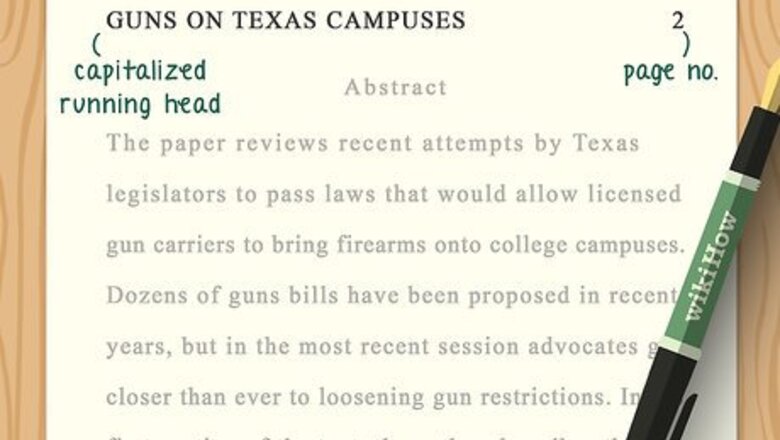
views
- Write and finalize your paper before writing the abstract.
- Center the word "Abstract" at the top of the page, under the header.
- Write a 150-250 word paragraph stating the purpose, methods, scope, results, conclusions, and recommendations included in your paper.
Following the Basic Format
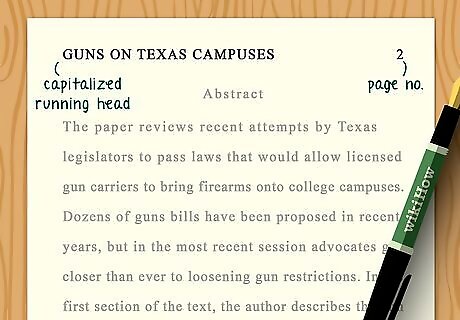
Make sure you have a page header. The page header, also known as the "running head," should be included at the top of every page. A shortened version of your paper's title should be aligned to the top left of the page. The character count should not exceed 50 characters, including spaces and punctuation. Every letter in the page header should be capitalized. The page number should appear in the top right of the page. An APA abstract should be the second page of your paper, so the number "2" should appear in the corner.
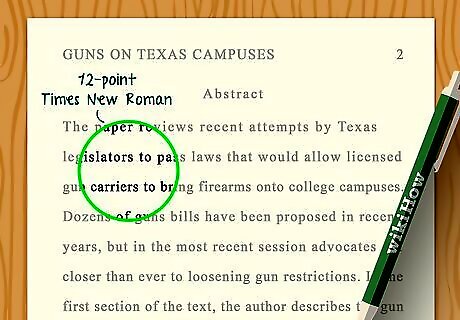
Use standard font. Unless your instructor states otherwise, you should use 12-point Times New Roman font. Some professors will also accept Arial font in 10-point or 12-point, but you should check with your professor before deciding to choose it.
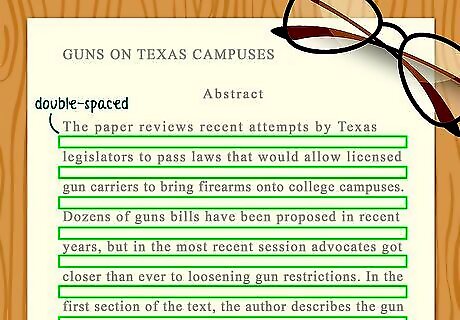
Double-space the text. All the text on your abstract should be double-spaced. "Double-spaced" means that lines of texts are separated by a blank line. Aside from the abstract, the entire paper should also be double-spaced.
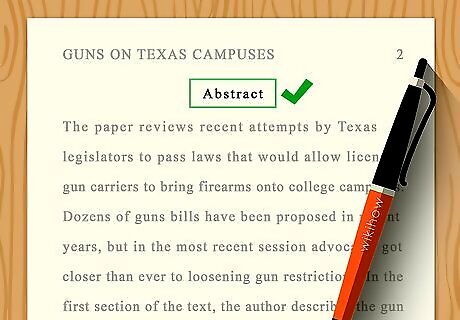
Center the word "Abstract" at the top of the page. The word comes below the page header, as the first line of normal text. The first letter of the word is capitalized, but the rest of the word is in lower-case. Do not bold, italicize, or underline the word, and do not use quotation marks. The word should stand alone and in normal font.
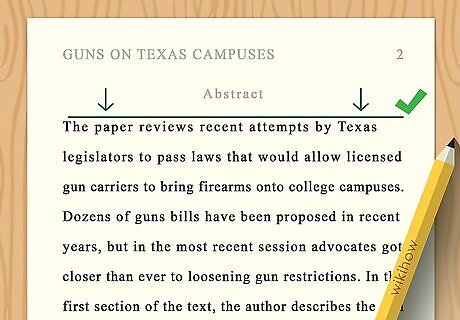
Begin the text of your abstract below. On the line immediately following the word "Abstract," the first line of your actual summary should appear. Do not indent the paragraph. Keep it short. A standard APA abstract is 150 to 250 words long and contained in a single paragraph.
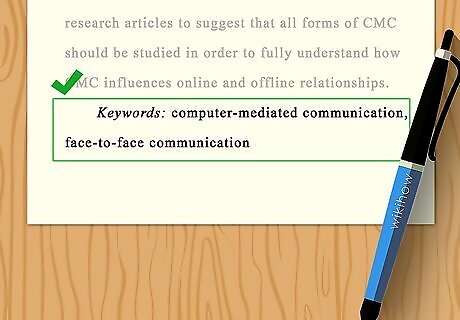
Include keywords below the abstract text. If requested, place a list of keywords on your abstract page on the line immediately following the actual text of your abstract. Indent as though starting a new paragraph. Type the word "Keywords" in italics. Capitalize the "K" and follow it with a colon. In normal, non-italicized font, follow the colon with three to four keywords describing the paper. These keywords should each appear in the text of the abstract. Separate them with commas.
Writing a Good Abstract
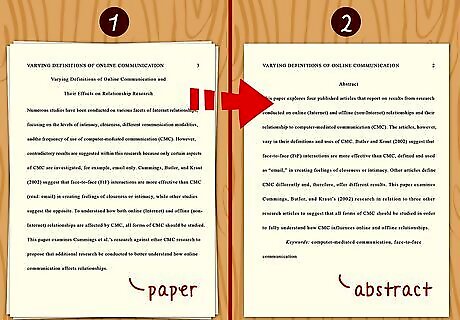
Write your abstract last. Since your abstract is a summary of your paper's contents, you should write it once the contents of your paper are finalized. To reflect the fact that it is a summary, your abstract should use present tense when referring to results and conclusions and past tense when referring to methods and measurements taken. Do not use future tense. Reread your essay before writing the abstract to refresh your memory. Pay close attention to the purpose, methods, scope, results, conclusions, and recommendations mentioned in your paper. Write a rough draft of your abstract without looking directly at your paper. This will help you to summarize without copying key sentences from your paper.
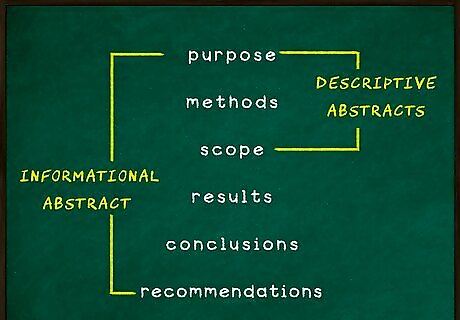
Know which type of abstract you need to write. An abstract can either be informational or descriptive. An informational abstract states the purpose, methods, scope, results, conclusions, and recommendations included in your report. The abstract should highlight essential points in order to allow the reader to decide whether or not to read the rest of the report. Its total length should be about 10 percent or less of the length of the report. Descriptive abstracts include the purpose, methods, and scope defined in the report, but not the results, conclusions, or recommendations. These abstracts are less common to APA style and usually fall under 100 words. The purpose is the introduce the subject to the reader, essentially teasing the reader into reading the report in order to learn the results.
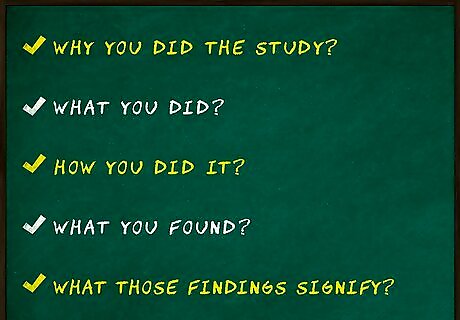
Ask yourself questions about your paper. In order to write a thorough informative abstract, you should ask yourself various questions about the purpose and results of your work. For instance, ask yourself why you did the study, what you did, how you did it, what you found, and what those findings signify. If your paper is about a new method, ask yourself what the advantages of the new method are and how well it works.
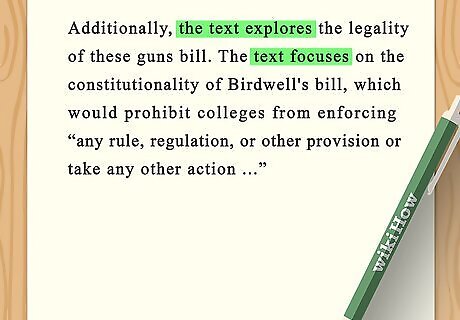
Only include details used in your essay. The abstract exists to summarize your paper, so including information in the abstract not used in the paper is a little like false advertising. Even if the information is closely tied to information used in the paper, it does not belong in the abstract. Note that you can and should use different wording in your abstract. The information should be the same as the information in your paper, but the way that information is phrased should differ.
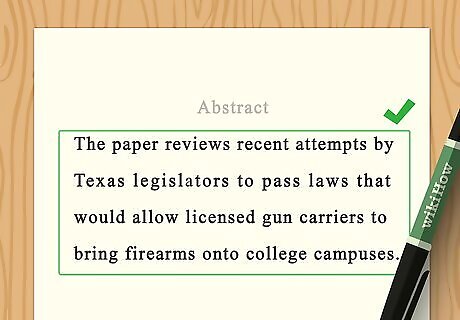
Let the abstract stand alone. The abstract should be dense and phrased in a way that allows it to be read alone. Avoid phrases like, "This paper will look at..." Since the abstract is so short, you should cut straight to the facts and details of your paper instead of spending effort explaining their connection to your paper. Do not rephrase or repeat the title since the abstract is almost always read along with the title. The abstract should be complete on its own since it is often read without the rest of the paper.
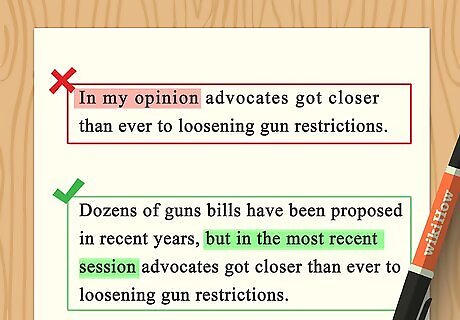
Do not comment on your findings. Report on your findings rather than commenting on them. You can and should state your findings, but do not attempt to justify them. The paper itself should be used to justify your findings and provide additional support, not the abstract.
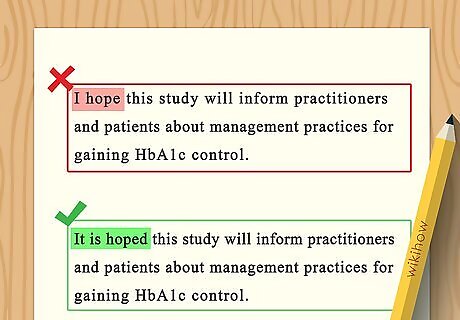
Avoid using the first person. Do not use "I" or "we." Instead, opt for neutral third person words like "it," "they," "he or she," and "one." You should also stick with active verbs more often than passive verbs. For instance, the strongest statement for an abstract would be, "research shows." Avoid using phrases like "I researched" or "it was researched."

Avoid abbreviations. While abbreviations and acronyms may appear in the text of the essay, they should not appear in the abstract. Also avoid trade names and symbols.



















Comments
0 comment